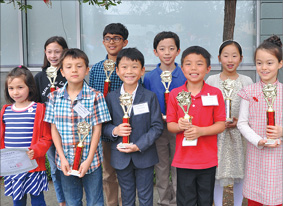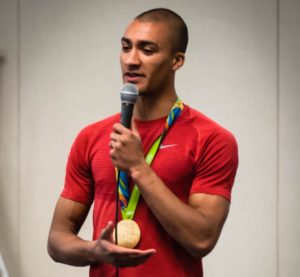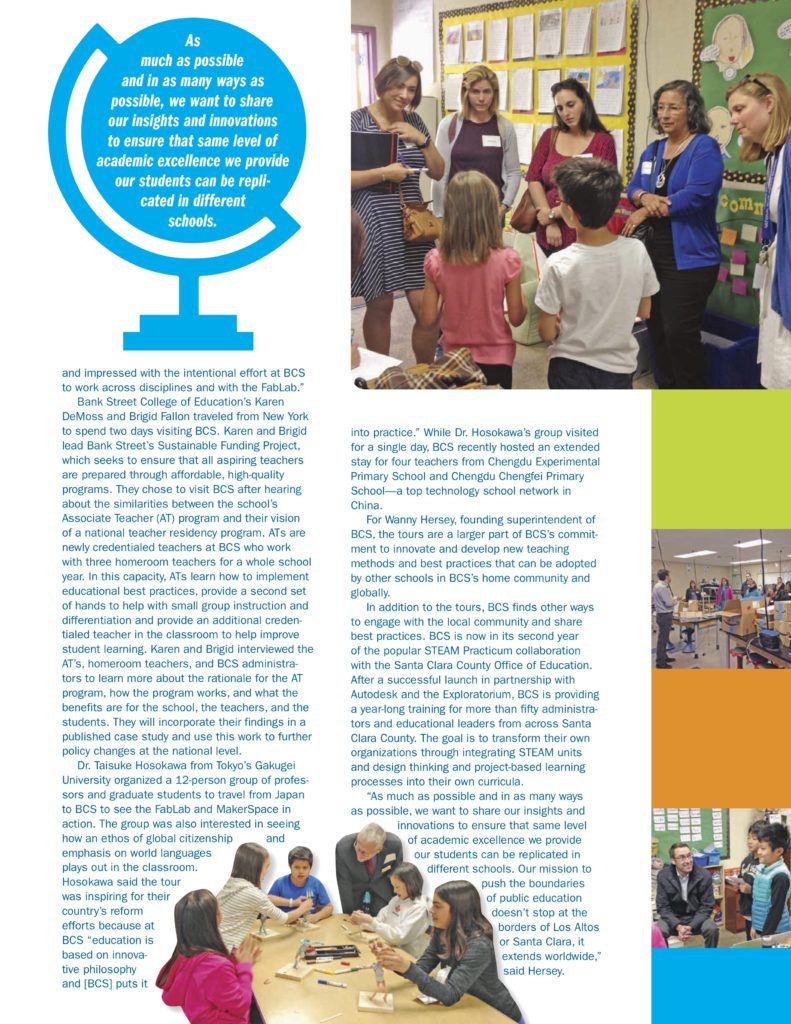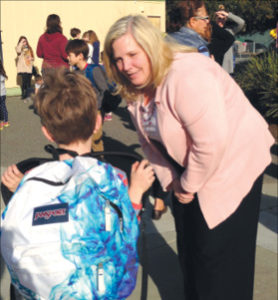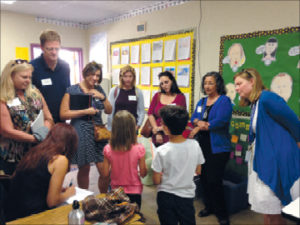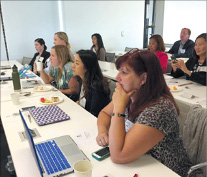Extra pay for cost of living scales up with each year of teaching
by Kevin Forestieri – Staff Writer, Mountain View Voice
Calling it much-needed relief for teachers struggling with the high cost of living in the Bay Area, Bullis Charter School’s board of directors agreed to give its 50 or so teachers a big pay boost.
The board approved two initiatives at its June 5 board meeting that aim to help offset the explosive increase in housing costs over the last 10 years, something that’s forced teachers to make longer commutes or leave the area entirely. The first is a $1,000 annual stipend that increases by an additional $1,000 each year, and the second is a pay increase — referred to as a “housing allowance” — that’s rolled directly into teacher salaries and is calculated as a percentage of the teacher’s base salary. The housing allowance automatically increases by 0.5 percent of the salary each year.
Bullis Charter School, like many school districts on the Peninsula, is searching for ways to hire and retain its teaching staff at a time when the high cost of housing and long commutes are pushing teachers out of the state or out of the profession altogether. Wanny Hersey, the school’s superintendent, said it wasn’t too long ago that teachers were able to live fairly close to Bullis, and could afford either a rental unit or a small house within a short drive of its two locations in Los Altos.
But now teachers are paying more and living further away, with some Bullis teachers traveling in from places like Walnut Creek, Santa Cruz and Watsonville each day, Hersey said. It’s reached a point where three of the school’s teachers are leaving Bullis and moving out of the state.
“It’s sad to lose excellent teachers,” Hersey said. “They leave not because they don’t want to work at Bullis, but they simply can’t afford to live here.”
Starting salaries at Bullis range from about $53,000 all the way to $118,000 for elementary school teachers, with a slightly higher pay scale for its middle school staff. Unlike contracts brokered between school districts and teachers unions — which include a rigid “step and column” formula for salaries based on tenure and education level — Bullis teachers are paid based on a performance-based model. The school reviews teachers’ salaries each year based on their “expertise and growth in areas such as pedagogical expertise, data analysis, project-based learning instruction, leadership, and global education integration,” according to a press release by the school.
The salary increases will be partially paid for by money from Measure GG, a $223 parcel tax that Los Altos School District voters passed in November last year, Hersey said. The parcel tax was meant to replace the $193 Measure E parcel tax, but the $30 hike was added so that Bullis Charter School could share in the proceeds. The measure is expected to generate about $300,000 in revenue for the charter school.
Bullis board chair John Phelps told the Voice in an email that while the high cost of living was a big factor in approving the pay bump, he said the charter school’s teachers also deserve to be rewarded for their top-tier performance.
“BCS teachers are true professionals who are at the cutting edge of their craft,” Phelps wrote. “We feel that should be rewarded and encouraged, and this is one way for us to recognize and honor the hard work that our teachers do every day.”
On top of housing costs, school are competing for a shrinking pool of teachers. Reports from Stanford University’s Learning Policy Institute last year shows that there was a national shortage of about 64,000 teachers in 2015, and by 2020 there will be an estimated 300,000 teachers needed to fill all the available positions. At the same time, fewer people are entering teacher training programs, and there’s a shrinking number of incoming college students who show an interest in teaching as a profession.
In order to attract and keep teachers in an increasingly competitive market, school districts are finding ways to sweeten the deal, including better health benefits and big salary increases. Last year, the Mountain View Whisman School District agreed to an 8 percent pay raise for its entire teaching staff. Late last year, the Santa Clara Unified School District agreed to a 9.5 percent salary increase for its more than 800 teachers.
Data from the California Department of Education shows the average salary paid out to elementary school teachers in Santa Clara County in the 2015-16 school year was $80,461 which is considered “very low income” for a family of four. Unified school district teachers didn’t fare much better, with the average salary amounting to $82,720.
